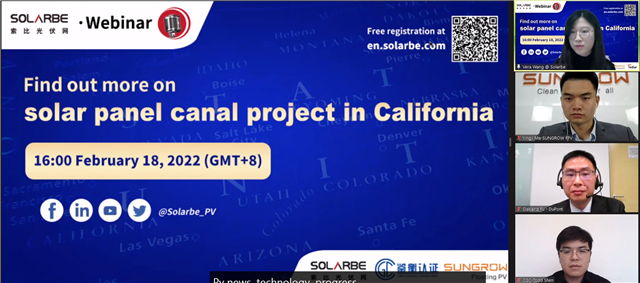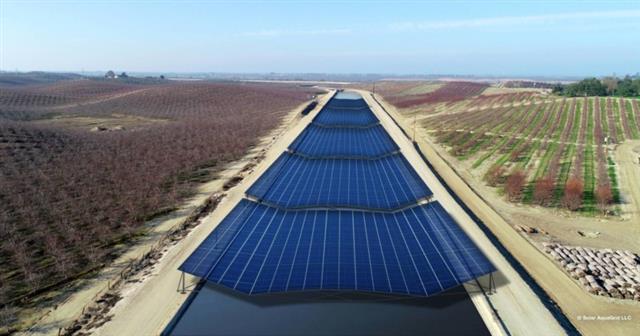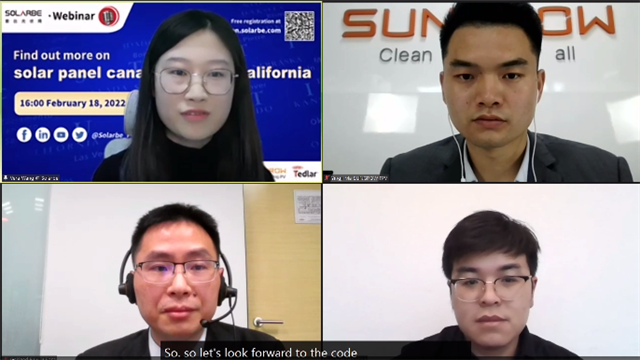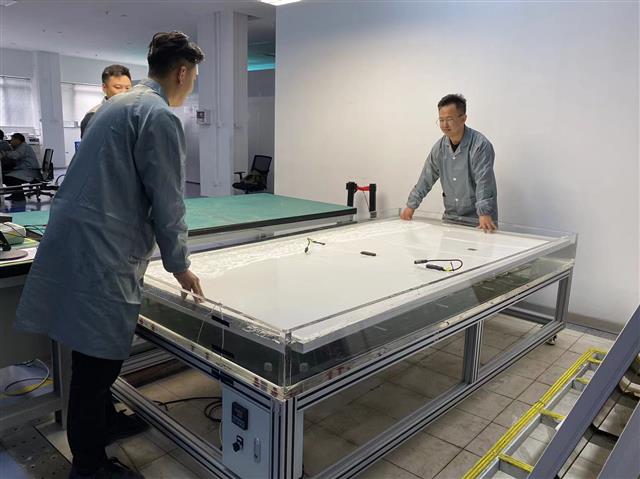An over-canal solar PV project named Project Nexus in California has recently caught a lot of attention and triggered heated debate within the solar industry. Despite of its advantages in water conservation, there are concerns over module degradation and corrosion under the humid environment.
On February 18th, Solarbe invited three industry experts for a panel discussion on this topic.

Screenshot of the webinar on solar panel canal project in California
Watch the recording of the webinar.
Pros & Cons
Dr. Oakland Fu, Global Marketing Manager of Tedlar PV, DuPont, said that the project has a lot of benefits, like reduced evaporation of water, reduced plant growth, etc.
“The running water in the canal helps to cool down the solar panels, which will increase solar panel efficiency, usually by around 3%,” he added.
Dr. Todd Shen, R&D Manager with PV Department from testing institution China General Certification (CGC), commented that, “canals share the advantages of relatively more stable run-off and water-level compared to the rivers and costal water, so it is definitely feasible to conduct such solar canopy project reliably and safely.”
Mr. Ma Yingji, Overseas Technical Manager at Sungrow FPV, which is the leader of floating PV systems and solutions, explained the differences between this project and floating PV projects. Different from floating PV projects which rely on the floating body and an anchoring system to support and fix the modules and the entire system, the over-canal project is supported by pillars and brackets like other piling projects.

Conceptual rendering of spanning the 110 foot-wide TID Main Canal (Courtesy: TID)
However, installing solar panels over canals is also faced with some challenges. Dr. Fu mentioned the higher cost of supporting structures, and if suspension cables are used to hold solar panels, it may lead to more vibration as well.
“Another concern is the need for access to the canal for the maintenance of solar panels and supporting structures,” added Dr. Fu. “The system is exposed to high humidity environment, which may also affect the reliability of the solar panels and other components of the solar system.”
Dr. Shen added that, “it is necessary to take the local climate into consideration, and also the application should have resistance to extreme weathers such as hurricanes and hails.”
Module degradation problems
“PV modules in such projects under the humid and hot environment may face some challenges in terms of reliability as the water vapor could gradually erode the modules, resulting in corrosion of ribbon, busbar and finger as well as the delamination of encapsulants,” Dr. Shen said.
He added that the corrosion can also contribute to PID effect, which can further lead to reduced power generation and increased electrical safety risks.
Dr. Fu commented that, the corrosion of interconnect ribbons may increase series resistance of the solar cells.
Series resistance and shunt resistance of solar cells used in floating crystalline silicon modules usually have higher power degradation than those used in ground-mounted projects, Dr. Fu added.
Tech involved
To minimize degradation and increase the reliability of the system, Mr. Ma from Sungrow FPV introduced key technologies that could be used in over-canal projects.
“First, it’s necessary to carry out the overall force analysis and load calculation of the system, such as wind speed, snow load, and other factors.” The number of support points and material of the system will then be decided based on the analytical results.
It is then necessary to carry out machinery analysis, simulation, and wind tunnel tests to verify module support choices.
The length and specifications of the pillars can then be selected according to the geological survey report.

Screenshot of the webinar on solar panel canal project in California
Mr. Ma added that, “the over-canal project has high requirements on the strength of the support and the whole system.” The system will have to withstand higher stress specially in the case of a wide river or canal. Therefore, sufficient theoretical and experimental analysis are essential for this pilot project.
Module backsheet, on the other hand, protects the panels from moisture and keeps electrical insulation of solar cells from the environment. “This is crucial for solar panels to last for at least 25 years, especially in high humidity environment,” Dr. Fu commented from his experience with DuPont.
If backsheet cracked in high humidity environment, the moisture will lead to delamination of encapsulants, cell corrosion and power loss of the solar panels.
Dr. Fu also mentioned that, “the backsheet needs to have good stability in high temperature, especially in California, to reduce the maintenance of the over-canal project.”
Testing is crucial
Dr. Shen from CGC pointed out that, “the modules used for such application on canals should have well resistance to high temperature, high humidity and UV stresses.” This is because California often have dry and hot summer as well as mild and wet winter.
Therefore, CGC recommends extended stress tests according to IEC TS 63209-1:2021, such as 2000-hr damp heat test, 192-hr PID test as well as sequential UV exposure testing.
![]()

![]()
Module testing at CGC lab
The competition and test launched by Solarbe and CGC also customized the stressed damp heat test to evaluate resistance of different manufacturers' products to the vapour corrosion, which can demonstrate the reliability of modules in hot and humid climate in a relatively short time.
Over a dozen leading enterprises have signed up to get their products tested. Modules’ performance and reliability are tested in labs, different climate conditions and application scenarios.
Those that outperform others in power generation, performance, reliability, etc. will be given the Performance Award or the Reliability Award during Guangdong Photovoltaic Forum early March.



